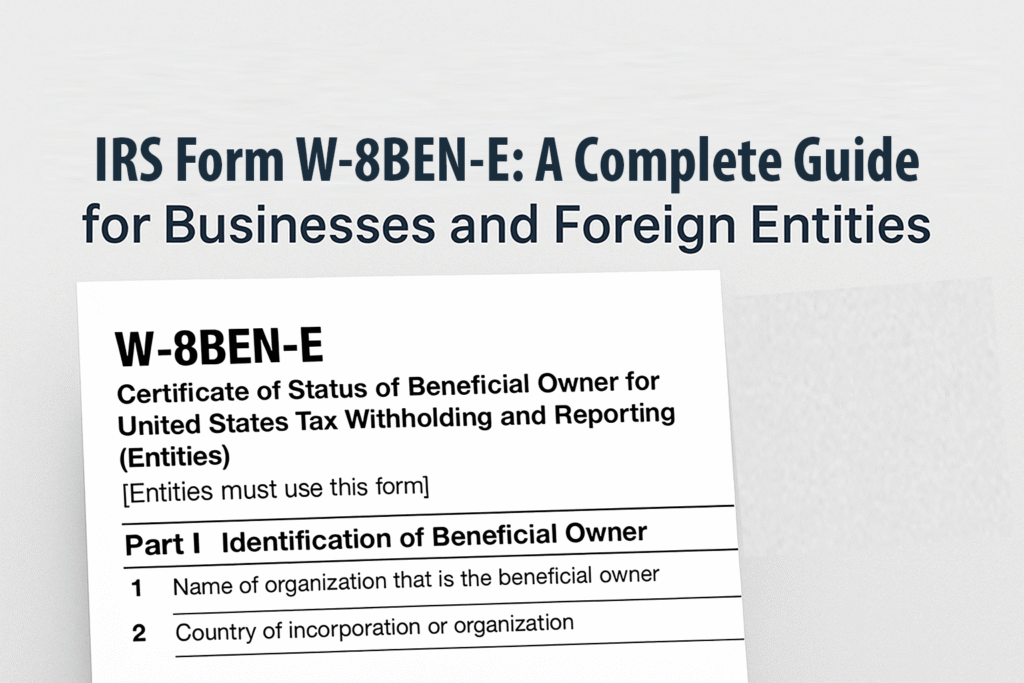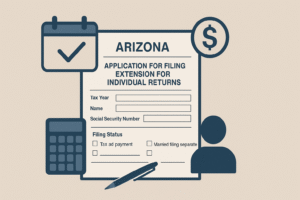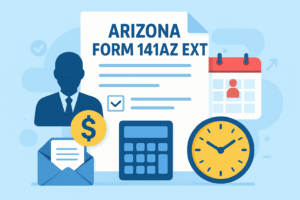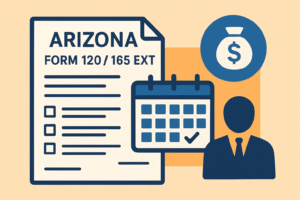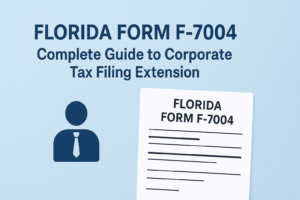When U.S. businesses make payments to foreign entities, they must comply with strict IRS reporting and withholding rules. One of the most important documents in this process is IRS Form W-8BEN-E, which certifies the foreign status of entities and determines whether withholding tax applies.
For tax professionals, business owners, and compliance officers, understanding Form W-8BEN-E is crucial to avoid penalties, unnecessary tax withholding, and IRS scrutiny. This guide provides a comprehensive, line-by-line breakdown of the form, its purpose, and related concepts such as Chapter 3 and Chapter 4 status, FFIs, NFFEs, and tax treaties.
Purpose of Form W-8BEN-E
The primary purpose of Form W-8BEN-E is to establish:
- Foreign status of the entity – certifying that the payee is not a U.S. entity.
- Beneficial ownership – confirming that the entity receiving the income is the beneficial owner.
- Applicable tax treaty benefits – identifying whether reduced withholding applies under an income tax treaty.
- Chapter 4 (FATCA) compliance – determining if the entity is an FFI (Foreign Financial Institution) or NFFE (Non-Financial Foreign Entity) and reporting obligations under FATCA.
Essentially, this form protects both the payer and the foreign entity from improper U.S. tax withholding.
Who Must Complete Form W-8BEN-E?
Form W-8BEN-E must be completed by foreign entities (not individuals) that receive income from U.S. sources. Examples include:
- Foreign corporations
- Partnerships and trusts outside the U.S.
- Foreign banks and investment funds
- Non-profit organizations or government entities abroad
Important distinction:
- Form W-8BEN (without the “E”) is used by foreign individuals.
- Form W-8BEN-E is strictly for foreign entities.
Who Is Considered Foreign Status of Beneficial Owner?
A beneficial owner is the person or entity that ultimately owns or controls the income. For W-8BEN-E purposes, the beneficial owner must:
- Be a non-U.S. entity that is not organized in the United States.
- Not be acting merely as an intermediary or agent.
- Have the legal right to the income (e.g., dividends, royalties, or interest).
Entities disregarded for U.S. tax purposes (e.g., single-member foreign LLCs) must still provide this form under their owner’s status.
How to Complete Form W‑8BEN‑E (Line‑by‑Line Guide)
Scope: This is a practical, plain‑English walkthrough of every part and line of Form W‑8BEN‑E (Rev. Oct 2021), including what to enter, when a line is required, and common mistakes to avoid. It’s written for non‑U.S. entities (companies, trusts, funds, nonprofits, government bodies, etc.).
Quick disclaimer: This guide is educational and not legal or tax advice. When stakes are high, confirm with a qualified tax advisor.
Before you start
- What the form does: Certifies that the payee is a foreign (non‑U.S.) beneficial owner of income and states its status under Chapter 3 (withholding on FDAP income) and Chapter 4 (FATCA). It may also claim tax treaty benefits.
- Who uses it: Non‑U.S. entities. (Individuals use Form W‑8BEN.)
- When requested: Before receiving U.S.‑source income (dividends, interest, royalties, service fees, certain gross proceeds, and, for brokers and some partnerships, amounts realized/1446(f)).
- How long it lasts: Generally valid until the last day of the third succeeding calendar year, unless a change in circumstances occurs. Some FATCA documentation can be indefinitely valid if conditions are met. Always update after changes.
Part I — Identification of Beneficial Owner (Lines 1–10)
Line 1 — Name of organization that is the beneficial owner
Enter the full legal name of the entity that is the beneficial owner of the income (not a nominee or agent). If you are a disregarded entity, the beneficial owner is your owner, so the owner’s name goes here (and you’ll use Part II to identify the disregarded entity or branch receiving payment).
Common mistakes: Using a trade name; entering the disregarded entity’s name instead of the owner’s; using all caps/abbreviations that don’t match formation documents.
Line 2 — Country of incorporation or organization
Enter the jurisdiction where the entity is legally formed/organized. Use the full country name (no abbreviations). This should align with line 6.
Line 3 — Name of disregarded entity receiving payment (if any)
Complete only if a disregarded entity (DE) is the payee of record or holds the account receiving the payment. Enter the DE’s legal name (exactly as registered). You’ll complete Part II as well.
Tip: If payments go to a branch outside your country of residence, you’ll also use Part II to identify that branch.
Line 4 — Chapter 3 status (entity type)
Check one box describing the entity for Chapter 3 purposes
For example: Corporation, Partnership, Disregarded entity, Simple trust, Grantor trust, Complex trust, Estate, Integral part of a foreign government, Controlled entity of a foreign government, Foreign central bank of issue, International organization, Tax‑exempt organization, Private foundation, etc.
How to choose: Select the box that describes your legal/organizational form—not your activity. If you are a DE, your owner’s status applies on line 4.
Line 5 — Chapter 4 status (FATCA status)
Select exactly one FATCA status. Your choice determines which Part IV–XXVIII you must complete. Options include (not exhaustive):
- Participating FFI / Reporting Model 1 FFI / Reporting Model 2 FFI / Registered deemed‑compliant FFI (various sub‑types)
- Nonreporting IGA FFI
- Certain investment entities that do not maintain financial accounts
- Sponsored FFI / Sponsored closely held investment vehicle / Sponsored direct reporting NFFE
- Direct reporting NFFE
- Active NFFE / Passive NFFE
- Excepted NFFE types (nonfinancial group entity; start‑up company; in liquidation/bankruptcy; publicly‑traded NFFE or NFFE affiliate; territory NFFE)
- Excepted inter‑affiliate FFI; Territory financial institution; Foreign government/international organization/foreign central bank
Also on line 5, if applicable, check “Account that is not a financial account.”
Tip: Choosing the wrong FATCA box is the #1 reason forms are rejected. If you check a status that requires a GIIN, make sure you provide it on line 9a.
Line 6 — Permanent residence address (street, city or town, country)
Provide your registered office or principal office address in the country on line 2. Do not use a U.S. or in‑care‑of (c/o) address here. Include postal code where used.
Line 7 — Mailing address (if different from line 6)
Enter only if different. May be outside the country on line 2, but do not use a U.S. address if that would conflict with foreign status.
Line 8 — U.S. EIN (TIN)
Enter your U.S. Employer Identification Number if you have one. A U.S. TIN is required if you are claiming treaty benefits (Part III) in many cases or as otherwise required under the regulations. If you don’t have an EIN and one is required, apply for one (Form SS‑4).
Line 9a — GIIN (if required)
Provide your Global Intermediary Identification Number if your status requires it (for example: participating FFI, registered deemed‑compliant FFI, reporting Model 1/2 FFI, direct reporting NFFE, sponsored direct reporting NFFE, or trustee of a trustee‑documented trust that is a foreign person). If you’ve applied but not received it yet, you may write “applied for” (the requester must verify your GIIN within 90 days). A branch GIIN, if relevant, is entered on line 13 (Part II).
Line 9b — Foreign TIN (FTIN)
If you are documenting an account at a U.S. office of a financial institution and you receive income reportable on Form 1042‑S, you generally must provide your foreign TIN from your tax‑residence jurisdiction (line 6), unless an exception applies (for example, certain government entities, residents of U.S. territories, or jurisdictions that do not issue FTINs). If you are not documenting such an account, you may provide an FTIN to support a treaty claim when a U.S. TIN is not required.
Line 9c — FTIN not legally required (checkbox)
Check this box only if you are otherwise required to provide an FTIN on line 9b but you are not legally required to obtain one under the laws of your residence country (including when the country does not issue FTINs). You may attach a brief explanation if helpful.
Line 10 — Reference number(s)
Optional tracking field used by you or the requester (for example: account number, internal vendor ID, or to associate the form with a withholding statement).
Part II — Disregarded Entity or Branch Receiving Payment (Lines 11–13)
Complete this part if the payment/account is held by a branch or disregarded entity that is not the same as the country on line 2, or if a DE has its own GIIN and is receiving a withholdable payment.
Line 11 — Name of disregarded entity or branch
Enter the legal name of the DE or identify the branch.
Line 12 — Address of the DE/branch and country
Enter the address and the country where the branch/DE is located.
Line 13 — GIIN (if any) of the branch/DE
Provide the GIIN of the branch (if it has one). Do not repeat the parent’s GIIN here unless the branch itself has a GIIN.
Common mistakes: Completing Part II when the account is in the same country as line 2 (not needed), or omitting the branch GIIN when the branch is the payee of record for a withholdable payment.
Part III — Claim of Tax Treaty Benefits (Lines 14–15)
Complete only if you are claiming reduced withholding under an income tax treaty.
Line 14a — Residency for treaty purposes
State the treaty country where the beneficial owner is a resident (as defined by that treaty). The country must have an in‑force treaty with the United States.
Line 14b — Treaty article, type of income, and rate
For each type of income you expect (for example, dividends, interest, royalties, business profits through a permanent establishment exception, etc.):
- Enter the Article and Paragraph number of the treaty provision.
- Enter the withholding rate claimed (e.g., 0%, 5%, 10%, 15%).
- Describe the type of income (match the treaty wording as closely as possible).
Tips:
- If multiple income types apply, list each, or attach a statement. The rate claimed must match the specific article (e.g., portfolio dividends vs. direct dividends may have different rates).
- If the treaty requires a U.S. TIN, ensure line 8 is completed (or follow allowed alternatives).
Line 14c — Limitation on Benefits (LOB)
Most modern treaties require you to meet an LOB test to claim reduced rates. Select the category that applies (examples include Government, Publicly traded company, Subsidiary of publicly traded company, Ownership/ base‑erosion, Active trade or business, Derivative benefits, Headquarters company, Pension fund, or Other). If you select Other, briefly explain how you meet the treaty’s LOB article.
Line 15 — Special rates and conditions
Use this only if you’re claiming a special rule (for example, certain bank interest, exemptions for specific royalties, or beneficial owner is a qualified resident under additional requirements). State the condition and how you satisfy it. Attach pages if needed.
Common mistakes: Citing the wrong article, claiming a parent‑subsidiary dividend rate without meeting the ownership % or holding period, or failing to complete LOB when the treaty requires it.
Parts IV–XXVIII — Certify Your Chapter 4 (FATCA) Status
Complete only the part that corresponds to the single box you checked on line 5. Below is a plain‑English summary of what each part is asking you to certify and the line(s) you must complete.
Note: If your status requires a GIIN, make sure line 9a (or line 13 for a branch) is completed. Some statuses also require attachments (for example, owner‑documented FFIs).
Part IV — Sponsored FFI (Lines 16–17)
- Line 16: Enter the sponsoring entity’s name (the sponsor fulfils due diligence, reporting, and withholding on your behalf).
- Line 17: Certify that the sponsor will identify you as a sponsored FFI in its registration and that you meet all requirements. You (the sponsored FFI) generally provide your own GIIN on line 9a.
Part V — Certified Deemed-Compliant Nonregistering Local Bank
This part is specifically for local banks that qualify for deemed-compliant status under FATCA rules.
- To confirm that the entity is a local financial institution that meets FATCA’s deemed-compliant requirements and does not need to register for a GIIN.
- Line 17: Check this box if the entity is a nonregistering local bank that:
- Operates and is licensed solely as a bank in its country of organization.
- Does not solicit U.S. account holders.
- Has only local clients.
- Is compliant with anti-money laundering and know-your-customer (KYC) rules.
- Key Documentation: The withholding agent may require proof of local bank status, such as regulatory licenses.
- Why Important: Checking this box allows exemption from certain FATCA reporting and withholding requirements.
- Common Mistake: Entities often check this part without actually being a qualified local bank. Misuse can trigger FATCA penalties.
Part VI — Certified Deemed-Compliant FFI with Only Low-Value Accounts
- Certify that all accounts held are under $50,000 and meet FATCA low-value thresholds.
Part VII — Restricted Distributor
- For distributors of retirement funds meeting FATCA exemptions.
Part VIII — Foreign Government
- Certify foreign government status to claim exemption from withholding.
Part IX — International Organization
- Certify international organization exemption.
Part X — Foreign Central Bank of Issue
- Certify central bank exemption.
Part XI — Exempt Retirement Plans
- For foreign retirement funds meeting exemption criteria.
Part XII — Section 501(c) Organization
- Used by foreign tax-exempt organizations.
Part XIII–XXVIII — Various FATCA Statuses
Each of these parts corresponds to different FATCA classifications (e.g., Passive NFFE, Active NFFE, Sponsored Entities, etc.).
Part XXIX — Active NFFE
- Certify that the entity earns less than 50% passive income and holds less than 50% passive assets.
Part XXX — Passive NFFE
- List any substantial U.S. owners.
- Provide ownership details, including U.S. TINs.
Part XXXI–XLIII — Other FATCA Classifications
Each section applies only to specialized categories such as Owner-Documented FFIs, Sponsored Entities, or Direct Reporting NFFEs.
Certification
- Must be signed by an authorized individual with capacity to act.
- Electronic signatures are allowed if permitted by the withholding agent.
- The form remains valid until the last day of the third calendar year following the year of signing, unless circumstances change (e.g., change of FATCA status).
Tip: Always double-check which Part applies to your entity. Most NFFEs only need Parts I, III (if treaty applies), XXIX or XXX, and Certification.
How Often to Obtain W-8BEN-E Forms?
- Valid until the last day of the third calendar year after signing, unless circumstances change.
- Example: A form signed in March 2025 remains valid until December 31, 2028.
- Payers must refresh or re-obtain the form after it expires.
What If Not Filling Out W-8BEN-E?
If a foreign entity fails to submit a valid W-8BEN-E:
- The payer must withhold 30% of certain U.S.-sourced income (interest, dividends, royalties).
- Payments may be subject to backup withholding.
- FATCA non-compliance may lead to reporting obligations and penalties.
In short, not providing the form leads to over-withholding and IRS compliance risks.
What is the difference between W-8BEN-E vs. W-8BEN Form?
| Feature | W-8BEN | W-8BEN-E |
| Who Uses It | Foreign individuals | Foreign entities |
| Purpose | Claim treaty benefits, certify foreign status | Claim treaty benefits, certify foreign entity’s status under FATCA |
| Complexity | Short (1 page) | Long (8 pages, 30 parts) |
| Example | Non-U.S. freelancer | Foreign corporation receiving U.S. dividends |
What Business Owners Do With W-8BEN-E?
U.S. businesses receiving the form must:
- Review for completeness – Ensure correct FATCA and treaty claims.
- Retain for records – Do not send to the IRS unless requested.
- Apply correct withholding rate – Based on treaty and FATCA status.
- Report on Form 1042-S – For payments made to the foreign entity.
What Is Chapter 3 Status?
Chapter 3 of the Internal Revenue Code governs withholding on payments to foreign persons. Status categories include:
- Corporation
- Partnership
- Trust
- Government entity
- International organization
This determines the basic withholding obligations before considering FATCA (Chapter 4).
What Is Chapter 4 Status?
Chapter 4 refers to FATCA (Foreign Account Tax Compliance Act), which requires foreign entities to disclose U.S. account holders or owners.
Chapter 4 status categories include:
- FFI (Foreign Financial Institution) – Banks, brokers, funds.
- NFFE (Non-Financial Foreign Entity) – Non-financial businesses.
- Exempt Beneficial Owners – Foreign governments, central banks.
What Is a Tax Treaty?
A tax treaty is an agreement between the U.S. and another country to avoid double taxation.
Benefits include:
- Reduced or eliminated withholding tax rates.
- Defined residency rules.
- Protection against discriminatory taxation.
To claim treaty benefits, the foreign entity must complete Part III of Form W-8BEN-E.
What Is an FFI?
Foreign Financial Institution (FFI) is a non-U.S. entity that:
- Accepts deposits (banks, credit unions).
- Holds financial assets for others (brokerages, custodians).
- Engages in investment activities (funds, insurance companies).
FFIs must register with the IRS and obtain a GIIN for FATCA compliance.
What Is an NFFE?
Non-Financial Foreign Entity (NFFE) is a foreign entity that is not a financial institution, such as:
- Manufacturing companies
- Service providers
- Retail businesses
NFFEs are divided into:
- Active NFFE – Less than 50% of income is passive.
- Passive NFFE – More than 50% of income is passive (interest, dividends).
Passive NFFEs must disclose their substantial U.S. owners.
What is a GIIN?
GIIN stands for Global Intermediary Identification Number.
- It is a 19-character identification number issued by the IRS to entities that register under the Foreign Account Tax Compliance Act (FATCA).
- Financial institutions (banks, investment funds, custodians, etc.) and certain direct-reporting non-financial foreign entities (NFFEs) must obtain a GIIN to show they are compliant with FATCA reporting requirements.
- The GIIN helps U.S. withholding agents verify whether a foreign entity is a Participating FFI, a Registered Deemed-Compliant FFI, or another FATCA-compliant entity.
Format Example: 123456.99999.SL.840
- The digits identify the entity and the country code.
- GIINs are published on the IRS FATCA Foreign Financial Institution (FFI) List, which withholding agents can search.
If an entity should have a GIIN but fails to provide one, U.S. withholding agents may treat it as non-compliant, leading to 30% FATCA withholding on U.S. source payments.
FATCA Status Categories
Under Form W-8BEN-E, entities must declare their Chapter 4 FATCA status. This is what the FATCA sections (Parts I–XLIII) are about. Here are the main categories:
1. Financial Institutions (FFIs)
Entities primarily engaged in holding financial assets for others or investing/trading in securities.
- Participating FFI (PFFI): Registered with the IRS, has a GIIN, reports accounts of U.S. persons.
- Registered Deemed-Compliant FFI (RDCFFI): Registered but with simplified obligations (e.g., certain local banks, qualified collective investment vehicles). GIIN required.
- Sponsored FFI: Another entity (sponsor) takes care of FATCA reporting. The sponsor’s GIIN is provided.
- Nonparticipating FFI (NPFFI): Did not register or comply. Subject to 30% FATCA withholding.
- Owner-Documented FFI: Provides documentation of its owners to withholding agents instead of registering.
2. Non-Financial Foreign Entities (NFFEs)
Entities that are not financial institutions.
- Active NFFE: Substantially all (≥50%) of its income is active business income and not passive (e.g., manufacturing company).
- Passive NFFE: Has mainly passive income (e.g., holding companies, investment entities not registered as FFIs). Must disclose substantial U.S. owners.
- Excepted NFFE: Exempt under specific categories (e.g., publicly traded corporations, certain non-profits, government entities).
3. Other Special FATCA Statuses
- Exempt Beneficial Owners: Certain government entities, central banks, and international organizations are exempt from FATCA withholding.
- Territory Financial Institutions: Institutions organized under U.S. territories (e.g., Puerto Rico banks).
- Nonreporting IGA FFI: Covered under an Intergovernmental Agreement (IGA) and not required to register with IRS.
Final Thoughts
Form W-8BEN-E plays a critical role in U.S. tax compliance for payments made to foreign entities. For U.S. businesses, collecting accurate and updated forms helps prevent over-withholding and IRS penalties. For foreign entities, correctly completing the form ensures access to tax treaty benefits and compliance with FATCA requirements.
Both parties should review the form carefully, understand Chapter 3 and Chapter 4 statuses, and consult a tax professional when in doubt.

